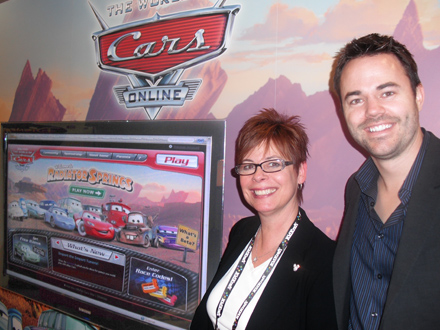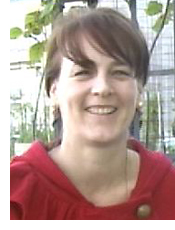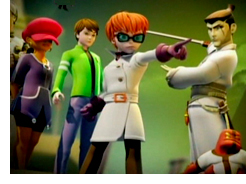Monday, September 6th, 2010
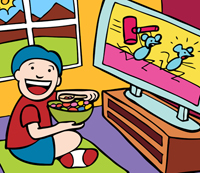
Breakfast cereal is really not my thing. Sure I eat it, but when I’m reviewing commercials on TV for work, I’m usually looking for toys and techno playthings, not cereal. Recently however, while reviewing virtual world commercials as part of a new client request, I just couldn’t ignore the dozens of breakfast cereals being advertised to kids. After noticing how many there are I decided to start a little side project. I would watch one children’s television station on any given Saturday morning and see what shows up. To begin my experiment I watched a five-hour Saturday morning block on Nickelodeon. Here are a few of the cereal ads I saw:
- Cinnamon Toast Crunch
- Cocoa Puffs
- Cookie Crisp
- Cupcake Fruity Pebbles
- Frosted Flakes
- Honey Nut Cheerios
- Lucky Charms
- Rheese’s Puffs
- Trix Swirls
These commercials are in such heavy rotation you could see most of them within about an hour, along with numerous yogurt, candy and restaurant ads targeting kids. (Just a note, Nickelodeon is not the only children’s channel to air these commercials. These same ads could be seen on Cartoon Network and Disney XD.)
The technicolor explosion of sugary cereal ads blew my mind. Wasn’t there some standard, at least a code of ethics in place, that prevented marketing these cereals to children during their morning cartoons? After doing a little research I learned in late 2007 the breakfast cereal industry announced they would self-regulate which products would and would not be advertised to children. They defined a number of industry guidelines; one in particular stated that this coalition of companies would not advertise cereals that contained more than 12 grams of sugar per serving to children. How much sugar did the cereals above contain? A quick trip to the supermarket revealed almost all skated just below the self-imposed rule of 12 grams per serving. But what was the standard serving size as part of this guideline? Almost all of these cereals recommended a serving size of 3/4 of a cup. Was that a lot? How much cereal does the average person eat for breakfast?
The next morning I went to the kitchen, poured myself a bowl of everyday, non-sugary cereal and measured it. I found I eat about 1 1/2 cups of cereal for breakfast. I then asked a number of kids, ages 11 – 14, to pour themselves a bowl of cereal, after which I measured each one. Their bowls ranged from 1 to 1 1/4 cups, 33 – 66% more than the recommended serving size.
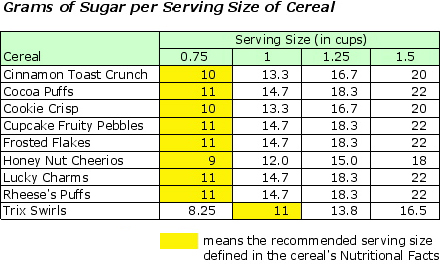
The conspiracy theorist in me wondered if these cereal companies simply reduced the size of a single serving to guarantee they could get the sugar levels below 12 grams per serving. In an attempt to prove my theory, all I would need to do is find the Nutritional Facts for each cereal before the self-imposed 2007 regulations. Did you know that eBay and Flickr are both excellent resources for finding photographs of nostalgic cereal boxes? I couldn’t find all of the cereals listed above, but I did find a 1979 box of Cocoa Puffs and Lucky Charms. That year both cereals had a recommended serving size of one cup. Today, the recommended serving size is 3/4 of a cup.
This retro cereal box sleuthing proved nothing though. These cereal companies may have changed their ingredients over the years, maybe even realized that one cup of cereal was actually too much to eat in a single sitting. I started to wonder if all this sugar-talk was a moot point. Just how much sugar is actually okay to eat in one day?
In 2003, the World Health Organization stated that a person’s daily caloric intake should not exceed more than 10% from sugar. If a typical adult calorie count per day is 2, 200 calories, the 10% ceiling translates into about 12 teaspoons or about 50 grams of sugar per day. After this announcement the US Sugar lobby had a fit with the WHO’s sugar guidelines and countered that the daily caloric intake of sugar could be as much as 25% per day. That’s about 30 teaspoons or 120 grams of sugar per day. Last year the American Heart Association recommended no more than 6 1/2 teaspoons or 25 grams of sugar per day for adult women, and no more than 9 1/2 teaspoons or 37 grams of sugar per day for adult men, recommendations below the WHO’s position. According to that math, if you have just one cup of any sugary cereal in the morning, and you wash it down with a cup of milk or orange juice, you’ve just about reached the upper limit of sugar intake for the day in a single meal. That means no more juices, cookies, sweets or deserts for the rest of the day.
If this country truly wants to reverse the growing childhood obesity problem, relying on self-imposed industry regulations for food advertising clearly won’t lead kids (or adults) to healthier eating choices. Like I said, cereal is not my thing, but I just can’t ignore what I see on children’s television every day. The food ads kids consume on a regular basis are far from sweet, and when you begin to pull back the curtain on this sugary controversy, you too may find you’re left with a very sour taste in your mouth.


